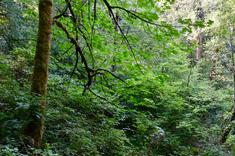Popular Blogs
All Blogs

Bears in neighborhoods on the border of Wood Creek!
Bears are in the neighborhoods surrounding Wood Creek

Everett City Council Tables the Sale of the Wood Creek Forest
We would like to provide an update and share a recent statement from Mayor Cassie Franklin regarding Wood Creek and its future. District 2’s council member, Paula Rhyne, has been actively pursuing a formal statement from the Mayor, which was finally received on August 23

Spring Update
The City of Everett may have decided to table any discussion on the development of the Wood Creek property at this time. From what we have heard, there seem to be too many complications that will make it difficult for the sale to move forward.

Forterras Wood Creek Future Land Use Scenarios Document in HTML
New official document regarding the future land-use scenarios for the Wood Creek Watershed

City of Everett Future Land Use Scenarios
We were just given a new official document regarding the future land-use scenarios for the Wood Creek Watershed.

Stewards of Wood Creek Everett Public Zoom Meeting Schedule
Save Wood Creek Stewards Meeting Schedule

Wood Creek Neighborhood Meeting Recap
On Sat. Aug. 28th over 50 people attended a neighborhood (Valley View and Eastmont) meeting to hear updates and ask questions regarding the future development of the 98 acre Wood Creek Forest.

Preserve Wood Creek Neighborhood Update Meeting
We are having a neighborhood meeting on Saturday, August 28th

Wood Creek Update
A Wood Creek project kick-off meeting was held on 4/29, led by Nick Bratton and Rebecca Schwartzman of Forterra.




